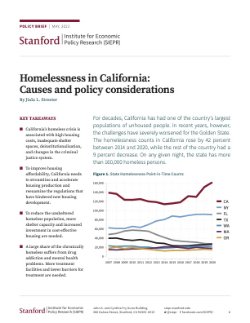By Megan Welsh Carroll , Shawn Teresa Flanigan , and Nicolas Gutierrez III
This paper examines racialized encounters with the police from the per-spectives of people experiencing homelessness in San Diego, California in2020. By some estimates, homelessness doubled in San Diego during the first year of the COVID-19 pandemic. We conducted a survey of (n ¼ 244)and interviews with (n ¼ 57) homeless San Diegans during initial shelter-in-place orders, oversampling for Black respondents, whose voices are often under-represented despite high rates of homelessness nationally. Ourrespondents reported high rates of police contact, frequent lack of respect;overt racism, sexism, and homophobia; and a failure to offer basic services during these encounters. Centering our Black respondents’ experiences of criminalization and racism in what Clair calls “criminalized subjectivity,” we develop a conceptual framework that brings together critical theoretical perspectives on the role of race in the governance of poverty and crime.When people experiencing extreme poverty face apathy, disrespect, and discrimination from police—as our data show—the result is a reluctance to seek services and to engage with outreach when offered. This reinforces stereotypes of unhoused people as not “wanting” help or “choosing” to be homeless. We reflect on these findings and our framework for envisioning a system of public safety that supports and cares for—rather thanpunishes—the most vulnerable members of our society
PUBLIC INTEGRITY2023, VOL. 25, NO. 3, 285–300













